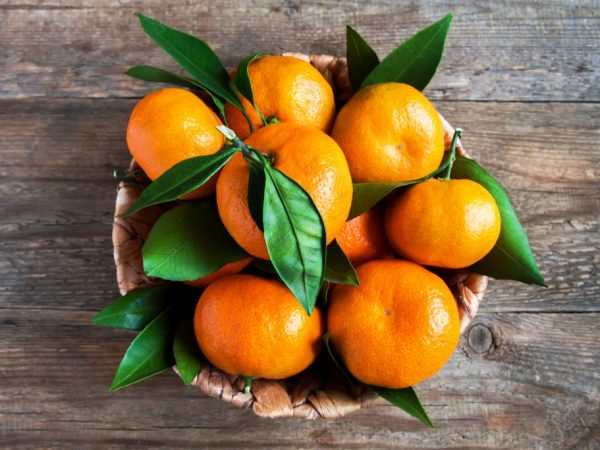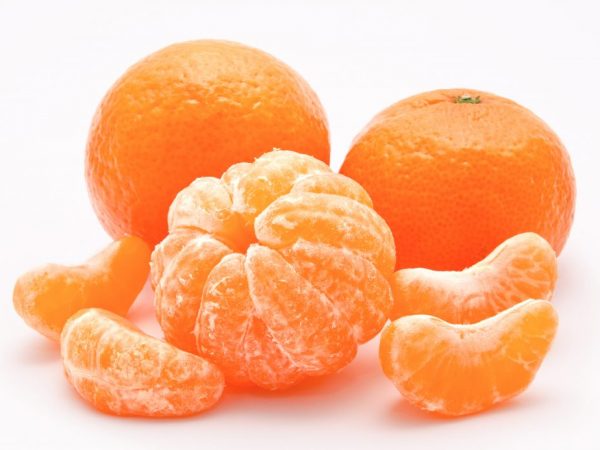Clementines and their health benefits
Clementine is a citrus from the orange subfamily of the Rutaceae family. It was bred in 1902 and since then has taken pride of place among fruits.

Clementines and their health benefits
Botanical characteristic
Clementines were obtained as a result of selection work by crossing two citruses: mandarin and Sicilian orange.
It is an evergreen plant that blooms with white inflorescences. The foliage of the tree is small, dense, jagged at the edges, pointed at the end and attached on short petioles. There are small spines in the leaf sinuses.
The fruit was named after the French breeder Clement Rodier.
Clementines are the closest relatives of tangerines, so they resemble this citrus in appearance, only a little smaller in size. To taste, clementines are sweeter, have a taste with honey notes.
The fruiting period is October-February.
Clementines are grown on North and South African citrus plantations, in the American states of California and Florida, in Spain, Morocco and Chile.
Differences from tangerines
Clementine differs from mandarin as follows:
- the diameter of the average clementine fruit reaches about 6 cm,
- the peel of the hybrids crossed with oranges is an order of magnitude softer, speckled with pores and easily peeled from the juicy pulp.
- Clementines are more rounded in shape, looking like small oranges.
The cost of hybrids is slightly higher than that of other citrus fruits.
Varieties
Today, there are 3 main varieties of clementines for regional cultivation.
- Corsican. They taste the sweetest among others. The fruits are covered with an orange-red crust and have a fragrant aroma. Seedless. The species is grown in Corsica and is protected by the local trademark. The Corsican variety goes on sale from early November to early February. As proof of the freshness of the fruit, the Corsicans adopted the custom of preserving foliage for sale on the fruit.
- Spanish. Grown in the Mediterranean. Fruits in small and large fruits with 2-10 seeds.
- Montreal. It is considered a rare varietal variety supplied by Spanish and Algerian gardeners. Fruits with 10-12 seeds appear by mid-October.
Some varietal varieties are grown by gardeners at home. Among such indoor clementines, the varieties Amoa-8 and Rubino Rosso are noted.
Chemical composition

Clementines contain many vitamins
The energy value of 100 g of citrus is 35-50 kcal.
Nutritional composition:
- up to 86.5 g of water,
- up to 12 g of carbohydrates,
- up to 2 g of dietary fiber,
- up to 0.85 g of proteins,
- up to 0.4 g of ash,
- up to 0.15 g of fat components,
Vitamins
- 48.8 mg of ascorbic acid (C),
- 14 mg choline (B4),
- 0.636 mg vitamin PP,
- 0.2 mg alpha-tocopherol (E),
- 0.151 mg pantothenic acid (B5),
- 0.1 mg betaine
- 0.086 mg thiamine (B1),
- 0.075 mg pyridoxine (B6),
- 0.03 mg riboflavin (B2),
- 24 mcg folate (B9)
- Macro and microelements:
- 177 mg potassium
- 43 mg copper
- 30 mg calcium
- 21 mg phosphorus
- 10 mg magnesium
- 1 mg sodium
- 0.14 mg iron
- 0.06 mg zinc
- 0.1 mcg selenium
- 0.023 mcg manganese.
Digestible carbohydrates per 100 g of citrus include:
- up to 9.18 g of mono - and disaccharides,
- up to 1.59 g of dextrose,
- up to 5.96 g sugar,
- up to 1.64 g of fructose.
Health Benefits
The benefits of clementines lie in their rich chemical composition.
The circulatory and immune systems

Citrus is able to raise the tone
Healthy fruits are famous for their large amount of ascorbic acid, the share of which exceeds the percentage of vitamin C in tangerines, grapefruits and oranges. Vitamin C takes an active part in oxidative and reduction processes, increasing the body's immune defenses and activating the absorption of iron.
Citrus, which has anti-inflammatory properties, is useful during exacerbation of respiratory diseases and to raise the tone.
Deficiency of ascorbic acid causes loose structure and bleeding of the gums, leads to nosebleeds due to increased permeability and excessive fragility of small blood vessels.
Heart muscle
The acids contained in clementine fruits are beneficial for the normal functioning of the heart muscle. Among the elements, potassium contributes to the normalization of blood pressure and is responsible for the contraction of muscle tissue.
Regulating excess weight
The healthy dietary fiber in citrus makes you feel full and inhibits excessive appetite. Together with the low calorie content of the product, this allows you to regulate excess weight. Fiber has cleansing properties, removes toxins and toxins.
Exchange processes
The normalization of lipid, protein and carbohydrate metabolism occurs due to the thiamine contained in the fruit - vitamin B1. As a result, the work of the brain is activated, the mood rises. Pyridoxine - vitamin B6 - is actively involved in the synthesis of proteins, helping to assimilate polyunsaturated acids and remove glucose.
Skin and hair
Antioxidants are the source of beauty and elasticity of the skin, strength of hair and nails, for which they use essential oil squeezed from the peel.
Contraindications
Being a relative of citrus fruits, clementine in some cases leads to allergic reactions and can cause harm to health in case of individual intolerance.
The recommended daily intake of citrus is 2 pieces.
It is forbidden to use clementine fruits that increase the acidity of the stomach in case of exacerbation of kidney and gastrointestinal diseases. Citrus should be limited to people with diabetes.
Scope of application
Clementines are consumed fresh, they are sugar-coated, juices, preserves and jams are made from them, added as a seasoning to alcoholic beverages. They serve as ingredients for salads and main courses, and are widely used in the preparation of desserts.
By means of cold pressing, an essential oil is obtained from the clementine peel, which has found wide application in cosmetology. Hot baths with it allow you to relieve depressive conditions and act as a means of combating insomnia.
Conclusion
Clementine is a cross between a mandarin and an orange and differs from these citrus fruits in size. Unlike other citrus fruits, the fruit tastes sweeter. In its chemical composition, the fruit contains numerous vitamins and elements, therefore it has beneficial properties for health and is widely used in cooking, cosmetology and folk medicine.

